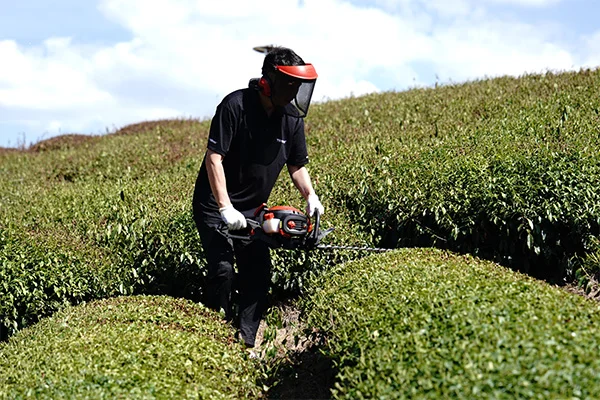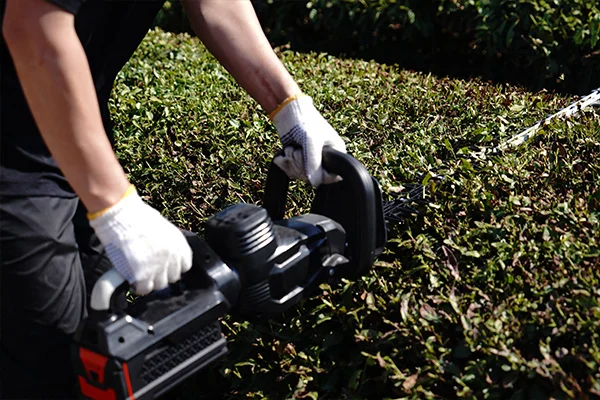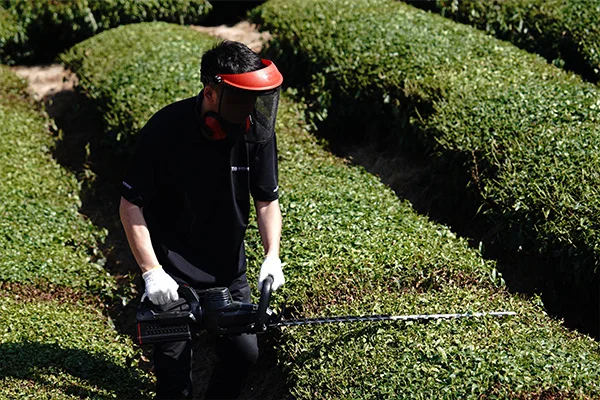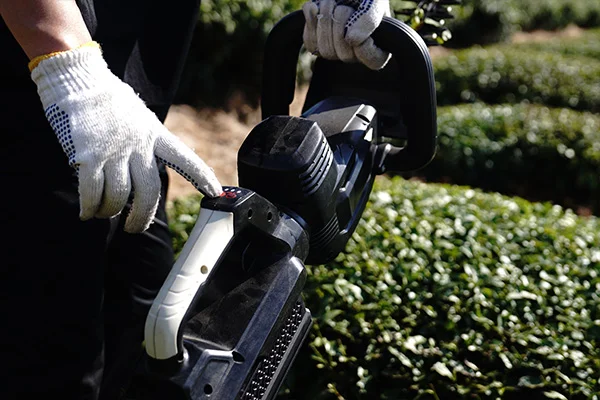Trimming Hedges and Shrubs: A Comprehensive Guide to Hedge Trimmers

Maintaining a beautiful garden requires effort, and one of the most important tasks is trimming hedges and shrubs. Not only do well-trimmed hedges and shrubs enhance the overall appearance of a garden, but they also promote healthy growth and prevent overgrowth that can become a nuisance. While there are various tools available for trimming hedges and shrubs, hedge trimmers are one of the most popular and efficient choices. In this post, we’ll provide a comprehensive guide to hedge trimmers, including different types, how to choose the right one, using them safely, tips for trimming, and maintenance.
Types of Hedge Trimmers
Before we dive into how to choose the right hedge trimmer, let’s first compare the two main types of hedge trimmers: gas-powered and electric.
Gas-powered Hedge Trimmers
Gas-powered hedge trimmers are known for their power and versatility. They’re ideal for trimming larger hedges and shrubs that require more cutting power. They’re also cordless, so they’re easy to move around and can be used in areas without a nearby electrical outlet. Gas-powered hedge trimmers are available in different sizes, blade lengths, and motor power, so you can choose the one that best suits your needs.
Electric Hedge Trimmers
Electric hedge trimmers come in two varieties: corded and cordless. Corded electric hedge trimmers are powered by electricity from an outlet, while cordless ones run on a rechargeable battery. Electric hedge trimmers are lighter and quieter than gas-powered ones, and they’re also easier to start and maintain. However, they’re not as powerful as gas-powered hedge trimmers, and corded ones can be limited by the length of the cord.
Choosing the Right Hedge Trimmer

Choosing the right hedge trimmer depends on several factors, including the size and type of the hedge or shrub you need to trim, as well as your personal preferences and budget. Here are some tips to help you choose the right hedge trimmer:
Blade length: Choose a blade length that matches the size of the hedges or shrubs you need to trim. Longer blades are better for larger hedges, while shorter blades are more suitable for smaller ones.
Motor power: If you’re using a gas-powered hedge trimmer, consider the motor power. A higher power motor will be able to handle thicker branches and tougher hedges.
Weight: Make sure the hedge trimmer you choose is light enough for you to handle comfortably. A heavier hedge trimmer may cause fatigue and strain after extended use.
Ergonomics: Look for a hedge trimmer with an ergonomic design that fits your hands comfortably and reduces strain on your arms and back.
Budget: Hedge trimmers are available in different price ranges, so choose one that fits your budget.
Using Hedge Trimmers Safely
Using hedge trimmers can be dangerous if not done properly. Here are some tips to help you use hedge trimmers safely:
Wear protective gear: Always wear protective gear when using a hedge trimmer, including gloves, safety glasses, earplugs, and sturdy shoes.
Avoid contact with power lines: Make sure you’re not cutting near power lines or other electrical hazards.
Use in a stable position: Use the hedge trimmer in a stable position, such as with both feet firmly on the ground. Avoid using the tool on a ladder or unstable surface.
Keep children and pets away: Keep children and pets away from the area where you’re trimming hedges and shrubs.
Tips for Trimming Hedges and Shrubs

Once you’ve chosen the right hedge trimmer and are using it safely, you’ll want to use it effectively. Here are some tips for trimming hedges and shrubs:
Use the right technique: Hold the hedge trimmer with both hands and move it in a sweeping motion along the hedge or shrub. Make sure to keep the blades parallel to the hedge to ensure an even cut.
Start at the bottom: Start trimming at the bottom of the hedge and work your way up to the top. This will ensure that you’re cutting off the right amount of foliage and preventing overgrowth.
Don’t cut too much at once: Avoid cutting too much off at once, as this can damage the hedge or shrub and make it harder to maintain its shape.
Use the right blade: Choose the right blade for the job. A single-sided blade is good for shaping and precision cutting, while a double-sided blade is better for larger hedges and shrubs.
Trim regularly: Regular trimming is key to maintaining healthy and well-shaped hedges and shrubs. Aim to trim them at least once a year, or more often if needed.
Maintenance and Care for Hedge Trimmers

To ensure that your hedge trimmer lasts longer and works effectively, you’ll need to maintain and care for it properly. Here are some tips:
Clean the blades: After each use, wipe the blades clean with a cleancloth or brush. You can also use a lubricating spray to keep the blades rust-free and running smoothly.
Sharpen the blades: Over time, the blades of your hedge trimmer can become dull and less effective. Sharpen them with a sharpening stone or file to keep them sharp and efficient.
Check and replace the air filter: If you’re using a gas-powered hedge trimmer, make sure to check the air filter regularly and replace it if needed. A dirty air filter can affect the performance of the tool and cause it to consume more fuel.
Store properly: When you’re not using your hedge trimmer, make sure to store it properly. Keep it in a dry and secure place, away from children and pets. If you’re using a gas-powered hedge trimmer, empty the fuel tank before storing it.
Conclusion
Trimming hedges and shrubs is an important task for maintaining a beautiful and healthy garden, and hedge trimmers are one of the most efficient tools for the job. Choosing the right hedge trimmer, using it safely and effectively, and maintaining it properly are key to achieving great results. By following the tips and advice provided in this guide, you’ll be able to trim your hedges and shrubs with ease and keep your garden looking its best. Remember to always prioritize safety and maintenance to ensure that your hedge trimmer lasts longer and works effectively. With the right hedge trimmer and the right technique, you can enjoy a beautiful and well-maintained garden for years to come.
Want to Know More About Our Products?
View All Products Now